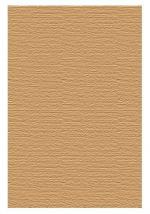|
This section contains 6,039 words (approx. 21 pages at 300 words per page) |

|
SOURCE: Haller, Evelyn. “‘Behind the Singer Tower’: Willa Cather and Flaubert.” Modern Fiction Studies 36, no. 1 (spring 1990): 39–55.
In the following essay, Haller investigates the influence of French writer Gustave Flaubert had on Cather's story “Behind the Singer Tower” and on the decisions she made regarding her life as an artist.
Cather, while an undergraduate, spoke of Flaubert as a writer who “sees” (Alvin G. Johnson, quoted in Sergeant 10). She became a comparably “visual” artist herself. It is no surprise, therefore, that she used Flaubert's novel Salammbô as a foundation, a visual commentary, for her early story “Behind the Singer Tower”; but it may come as a surprise that she also drew a metaphor from Flaubert for a crisis in her artistic life.
Cather wrote “Behind the Singer Tower” while she was still thankful that she had escaped from Nebraska—not merely to the cave of the Iron Kings that...
|
This section contains 6,039 words (approx. 21 pages at 300 words per page) |

|


